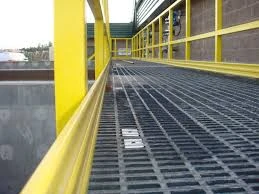
-
 Afrikaans
Afrikaans -
 Albanian
Albanian -
 Amharic
Amharic -
 Arabic
Arabic -
 Armenian
Armenian -
 Azerbaijani
Azerbaijani -
 Basque
Basque -
 Belarusian
Belarusian -
 Bengali
Bengali -
 Bosnian
Bosnian -
 Bulgarian
Bulgarian -
 Catalan
Catalan -
 Cebuano
Cebuano -
 China
China -
 China (Taiwan)
China (Taiwan) -
 Corsican
Corsican -
 Croatian
Croatian -
 Czech
Czech -
 Danish
Danish -
 Dutch
Dutch -
 English
English -
 Esperanto
Esperanto -
 Estonian
Estonian -
 Finnish
Finnish -
 French
French -
 Frisian
Frisian -
 Galician
Galician -
 Georgian
Georgian -
 German
German -
 Greek
Greek -
 Gujarati
Gujarati -
 Haitian Creole
Haitian Creole -
 hausa
hausa -
 hawaiian
hawaiian -
 Hebrew
Hebrew -
 Hindi
Hindi -
 Miao
Miao -
 Hungarian
Hungarian -
 Icelandic
Icelandic -
 igbo
igbo -
 Indonesian
Indonesian -
 irish
irish -
 Italian
Italian -
 Japanese
Japanese -
 Javanese
Javanese -
 Kannada
Kannada -
 kazakh
kazakh -
 Khmer
Khmer -
 Rwandese
Rwandese -
 Korean
Korean -
 Kurdish
Kurdish -
 Kyrgyz
Kyrgyz -
 Lao
Lao -
 Latin
Latin -
 Latvian
Latvian -
 Lithuanian
Lithuanian -
 Luxembourgish
Luxembourgish -
 Macedonian
Macedonian -
 Malgashi
Malgashi -
 Malay
Malay -
 Malayalam
Malayalam -
 Maltese
Maltese -
 Maori
Maori -
 Marathi
Marathi -
 Mongolian
Mongolian -
 Myanmar
Myanmar -
 Nepali
Nepali -
 Norwegian
Norwegian -
 Norwegian
Norwegian -
 Occitan
Occitan -
 Pashto
Pashto -
 Persian
Persian -
 Polish
Polish -
 Portuguese
Portuguese -
 Punjabi
Punjabi -
 Romanian
Romanian -
 Russian
Russian -
 Samoan
Samoan -
 Scottish Gaelic
Scottish Gaelic -
 Serbian
Serbian -
 Sesotho
Sesotho -
 Shona
Shona -
 Sindhi
Sindhi -
 Sinhala
Sinhala -
 Slovak
Slovak -
 Slovenian
Slovenian -
 Somali
Somali -
 Spanish
Spanish -
 Sundanese
Sundanese -
 Swahili
Swahili -
 Swedish
Swedish -
 Tagalog
Tagalog -
 Tajik
Tajik -
 Tamil
Tamil -
 Tatar
Tatar -
 Telugu
Telugu -
 Thai
Thai -
 Turkish
Turkish -
 Turkmen
Turkmen -
 Ukrainian
Ukrainian -
 Urdu
Urdu -
 Uighur
Uighur -
 Uzbek
Uzbek -
 Vietnamese
Vietnamese -
 Welsh
Welsh -
 Bantu
Bantu -
 Yiddish
Yiddish -
 Yoruba
Yoruba -
 Zulu
Zulu
fiberglass fitting
Understanding Fiberglass Fittings An Essential Component for Various Industries
Fiberglass fittings play a crucial role in various industries due to their durability, resistance to corrosion, and lightweight properties. As an innovative material, fiberglass has transformed traditional fitting solutions often used in plumbing, electrical installations, and numerous industrial applications. This article will delve into the characteristics of fiberglass fittings, their applications, and the reasons behind their increasing popularity.
Characteristics of Fiberglass Fittings
Fiberglass fittings are made from glass fibers that are combined with a resin matrix, creating a composite material renowned for its strength-to-weight ratio. One of the primary advantages of fiberglass is its resistance to a range of environmental stresses. Unlike metal fittings, fiberglass does not rust or corrode, making it ideal for use in harsh settings, including chemical processing plants and wastewater treatment facilities. Moreover, fiberglass fittings are non-conductive, which is essential in electrical applications where safety is paramount.
Another notable characteristic of fiberglass is its ability to withstand extreme temperatures. Fiberglass fittings can resist temperatures ranging from -40°F to over 200°F, making them suitable for both cold and hot water systems. Their low thermal conductivity also means minimal heat loss, contributing significantly to energy efficiency in various applications. Furthermore, fiberglass fittings are lightweight, meaning easier handling and installation compared to traditional metal fittings, which can be bulky and cumbersome.
Applications of Fiberglass Fittings
The applications of fiberglass fittings are extensive and varied across different sectors. In the construction industry, fiberglass fittings are often utilized in plumbing systems, particularly for underground piping where corrosive soil or water conditions are prevalent. Their longevity and reliability reduce the need for constant maintenance and replacements, thereby lowering overall costs for building owners.
fiberglass fitting

In the electrical industry, fiberglass fittings are used to house and protect wiring systems, especially in environments where exposure to moisture or chemicals could lead to short circuits or electrical failures. Their non-conductive nature enhances safety and prevents accidental electrocution.
Moreover, fiberglass fittings are widely used in oil and gas applications, where they can withstand the corrosive effects of hydrocarbons. These fittings are integral to the construction of pipelines, valves, and storage tanks designed to transport and store chemicals safely. Additionally, fiberglass is often chosen for its ability to reduce weight in these applications, where traditional steel or metal fittings can add unnecessary load.
Growing Popularity
The popularity of fiberglass fittings continues to grow due to advancements in manufacturing technology and increased awareness of the material's benefits. Several industries are shifting towards fiberglass solutions as they become more environmentally conscious and seek sustainable building practices. Fiberglass fittings, being more durable, contribute to less waste as they require fewer replacements over time, aligning with global trends toward sustainability.
Furthermore, with growing innovation in production techniques, manufacturers are producing fiberglass fittings that are not only robust but also aesthetically pleasing. This has expanded their use beyond utility applications to include architectural features in modern constructions.
Conclusion
In summary, fiberglass fittings are an essential component in various industries, known for their durability, lightweight nature, and resistance to environmental stresses. Their unique properties make them suitable for applications ranging from plumbing systems to electrical housings and oil and gas transportation. As industries increasingly recognize the advantages of using fiberglass, these fittings are poised to become a standard choice, further highlighting the significance of innovative materials in today’s engineering and construction practices. As technology continues to evolve, so too will the application and efficacy of fiberglass fittings, ensuring they remain a key player in future developments across multiple sectors.









